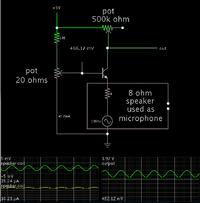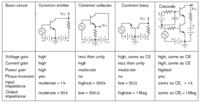saviourm
Junior Member level 3


Dear Friends
First, thank you for your support and replies!
Currently I am studying the emitter bias config of a transistor please find fig attached. I have three questions in mind:
1 ,Why VCC doesn't effect the collector current and voltage drop across RE ?
2 Is this circuit is it like two supply emitter bias(the battery(VBB ) can be redrawn as the positive terminal faces to ground and negative terminal face the emitter resistor)?
3. This circuit can it be used as a current source?(please can you state the value of emitter resistor and the collector resistor for a current source)
Bst Wshs
SM





